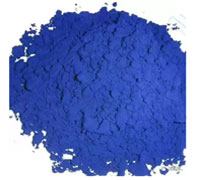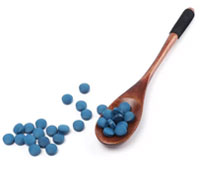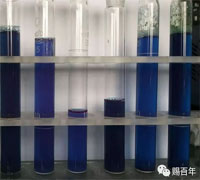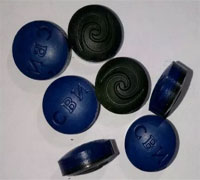|
From the SARS virus in 2003 to the new coronavirus, the coronavirus never left and never stopped attacking humans. The development of human beings has continuously compressed animals and viruses, thereby squeezing our own production. At present, there is no definite special medicine for these viruses, and resistance to defeating these viruses still depends on the body's own immune system and improving resistance has become the theme of this year's life diary, especially middle-aged and elderly people.
Reference from Scientific report on a study on spirulina extract:
Influenza is one of the most common respiratory diseases in humans, well known for its high morbidity and mortality, especially among very young, elderly, and chronically ill patients.
Influenza viruses cause seasonal outbreaks, and every year, and occasional pandemics, can quickly spread and infect up to 50% of the affected population.
The World Health Organization (WHO) estimates that there are 3 to 5 million serious diseases worldwide. Every year, 250,000 to 500,000 people die from seasonal type II influenza, and a pandemic may keep the death toll flat.
In addition to death, influenza also brings a heavy economic and medical burden to society. This is a serious public health problem that needs to be effectively resolved. Among all influenza viruses, influenza A virus is the only known virus that causes a pandemic.

Spirulina extract can inhibit the formation of various influenza virus plaques. We initially evaluated the antiviral properties of spirulina extracts through the thrombocytopenia test.
Spirulina extract is safe and well tolerated. Because spirulina extract proved to be a broad-spectrum anti-influenza cell test, we further sought to assess the biological safety of spirulina extract in vivo. Spirulina extract most effectively destroys virus replication in the early stages of infection. As spirulina extracts have broad anti-influenza activity in vitro, they are especially toxic in cell models with lower activity.
In many parts of the world, poultry and livestock live together, and the number of poultry and livestock may increase the chances of recombination of the genomes of different host influenza viruses. Combining the convenience of global travel means that influenza viruses are more likely to evolve and spread than  ever before. Previously, the next influenza pandemic was not an expected issue, but what was unknown. Once an outbreak occurs, vaccine development often lags behind disease transmission, and the transfer of viral antigens means that newly developed vaccines can become possible. For future clinical trials, chemical characterization and evaluation of active compounds, spirulina extracts will be required, as well as appropriate quality control measures. Complete chemical analysis and identification of active compounds require a lot of time and effort. Different solvents will require fractional distillation techniques and analytical equipment, which is currently beyond the scope of this study. ever before. Previously, the next influenza pandemic was not an expected issue, but what was unknown. Once an outbreak occurs, vaccine development often lags behind disease transmission, and the transfer of viral antigens means that newly developed vaccines can become possible. For future clinical trials, chemical characterization and evaluation of active compounds, spirulina extracts will be required, as well as appropriate quality control measures. Complete chemical analysis and identification of active compounds require a lot of time and effort. Different solvents will require fractional distillation techniques and analytical equipment, which is currently beyond the scope of this study.
However, we have managed to assemble a basic picture chemical composition contained in the spirulina cold water extract protein content is 39.33 ± 5.6%, polycystic-content is 11.79 ± 5.7% charides account for 19.29 ± 2.7% of nucleic acids, 5 ± 1% water, 1.2 ± 0.3% ash, about 23.39% of other or unknown components (Supplementary Table S3). c-Phycocyanin accounts for about 50% of the protein component of the main component of the spirulina cold water extract, while isophycocyanin accounts for about 10%. In addition, the anti-influenza activity of the cold water extract of Spirulina (anti-A / WSN / 33 influenza virus in our study, the neutralization test was used as a bioassay control to monitor the efficacy between different batches of Spirulina extract It has good long-term stability. On the other hand, about 20% of the spirulina extract is composed of protein c-phycocyanin. It has been reported that it can down-regulate the expression of inflammatory factors iNOS and COX-2 in macrophages. Lung tissue 27-29. C-phycocyanin can also be used as a selective COX-2 inhibitor to reduce inflammation30. In a model of salicylate-induced tinnitus in mice, c-phycocyanin was found to have a down-regulation effect after oral administration The expression of COX-2 gene in the cochlea and inferior colliculus. It is currently believed that the host immune response with a disproportionately high viral load is the two main factors driving the pathogenesis of influenza. extract is composed of protein c-phycocyanin. It has been reported that it can down-regulate the expression of inflammatory factors iNOS and COX-2 in macrophages. Lung tissue 27-29. C-phycocyanin can also be used as a selective COX-2 inhibitor to reduce inflammation30. In a model of salicylate-induced tinnitus in mice, c-phycocyanin was found to have a down-regulation effect after oral administration The expression of COX-2 gene in the cochlea and inferior colliculus. It is currently believed that the host immune response with a disproportionately high viral load is the two main factors driving the pathogenesis of influenza.
Therefore, the COX-2 inhibitory ability and antiviral properties of spirulina extracts may play a role in series to improve the prognosis of infected patients.
In summary, we have proved that Spirulina cold water extract is safe. It is well tolerated in animal toxicity studies and significantly inhibits viral infection and replication in a wide range. Influenza viruses including the Oseltamivir strain. The survival rate of patients infected with influenza has also improved. Mice treated with spirulina extract. We found that Spirulina extract has the effect of blocking blood agglutination, and the virus particles inhibit influenza virus strains.
|
